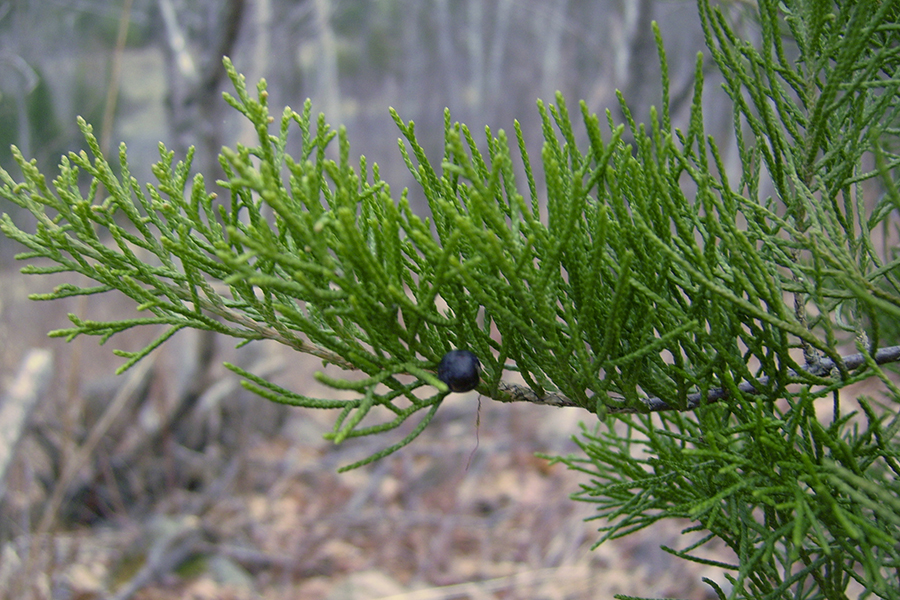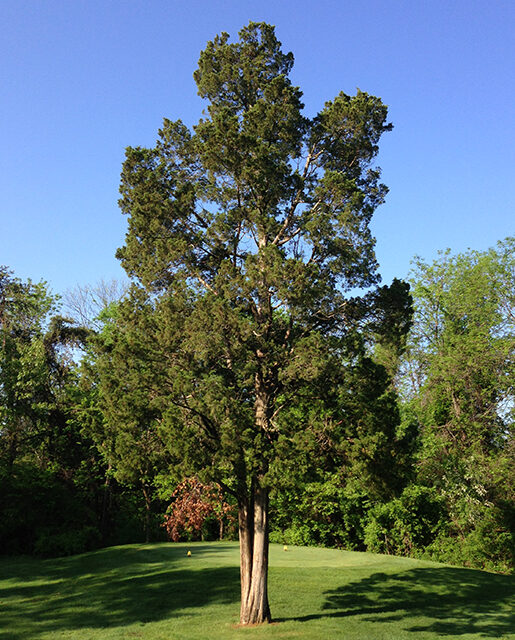Juniperus virginiana
The eastern red cedar is an evergreen tree native to eastern North America with fibrous red bark and dense foliage.
Location
Today, the eastern red cedar can still be found in a few places on the property. Walking along the Hidden Spring Trail will reveal the cedar in a few places; including by the spring itself.


History at Hadwen
In 1882, Hadwen notes the eastern red cedar amongst a list of 135 species he is growing on the property. Whilst we don’t see any further record of the species until 2020, Hadwen notes cedar trees as a “desirable and pleasing” species in 1900.
Keep Learning
Detailed Species Information
Eastern red cedar, sometimes known as eastern juniper, is a coniferous tree in the family Cupressaceae native to eastern North America. The tree grows up to 50 feet (15 meters) tall with a narrow, conical crown. The bark is thin, fibrous, and brownish-red, while the leaves are scale-like, arranged in flattened fan-like sprays, and dark green in color. Eastern red cedar produces pea-sized dark blue cones. Eastern red cedar can thrive in a variety of habitats but prefers dry and rocky soils. The eastern red cedar is considered a pioneer species, an early species to repopulate disturbed areas. It is also considered intolerant to shade.
Eastern red cedar’s wood is lightweight, durable, and resistant to rot and insects, making it an excellent choice for fence posts, shingles, and boat building. Since the aromatic qualities of the cedar’s wood repel moths, cedar chests and closets were often used to protect woolen clothes from moths. The tree is also used in landscaping as a hedge or ornamental tree due to its attractive evergreen foliage and dense growth.
